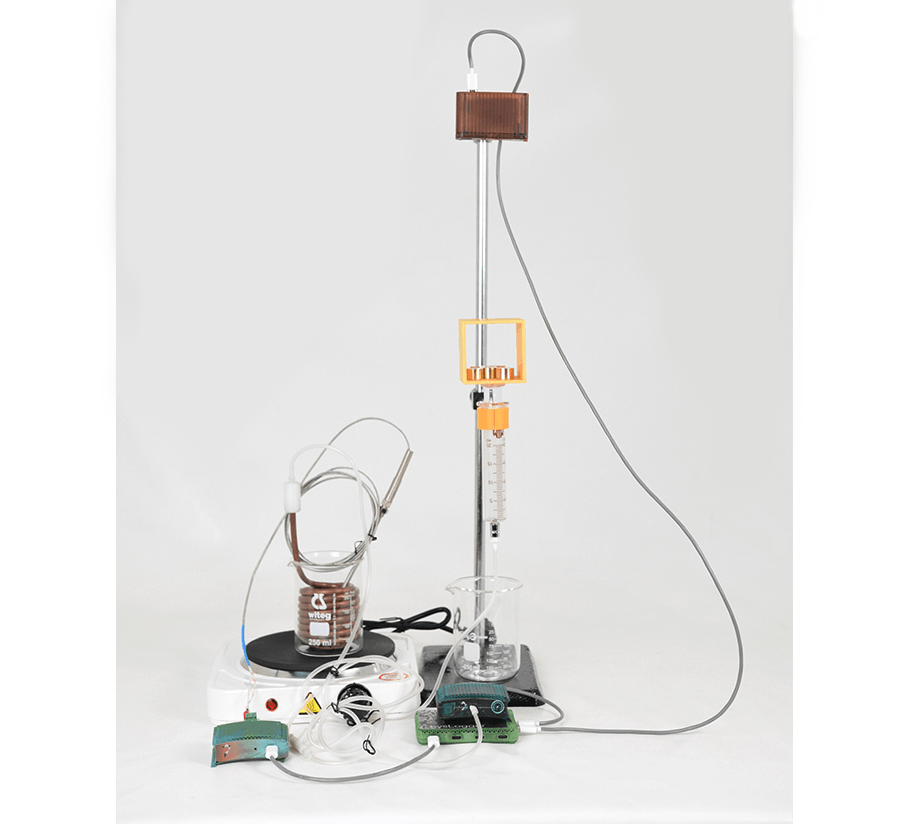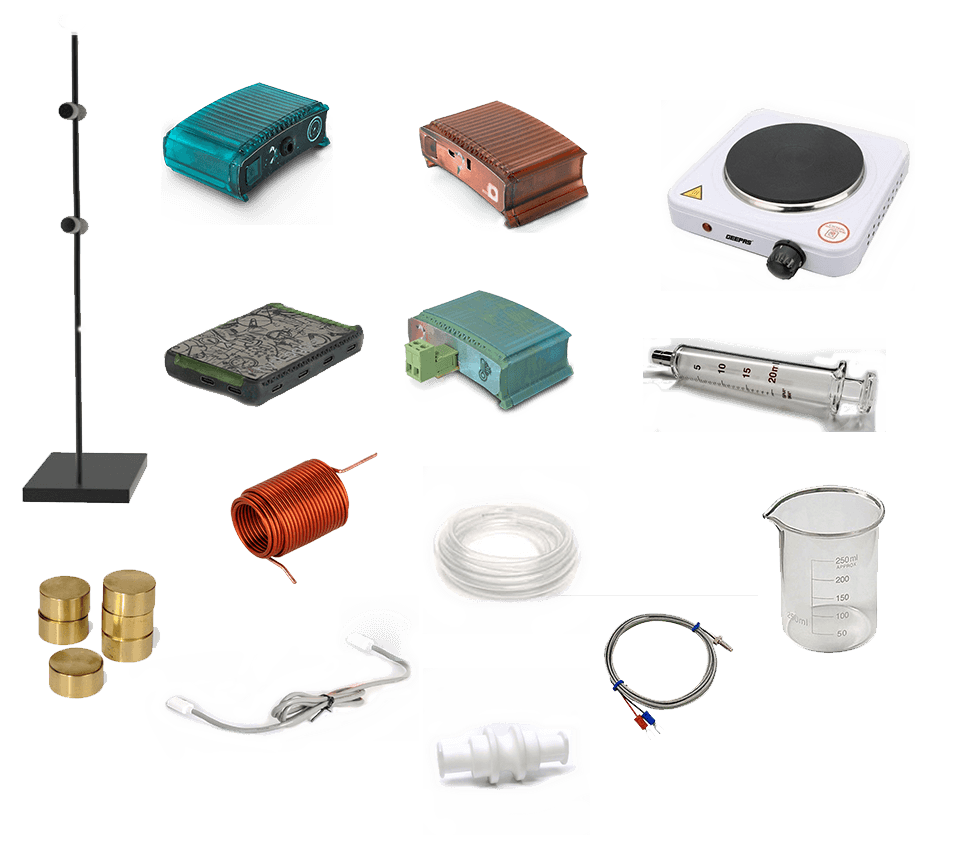Verifying Gas laws and Heat Engine Thermodynamics with PhysLogger
Using PhysLogger and its compatible sensing PhysInstruments, this experiment investigates the Amonton’s, Boyle’s, and Charles’ laws, which are fundamental to understanding how ideal gases behave. Additionally, we generate and study engine cycles. This experiment gives an engaging, visual, and quantitative understanding of these important thermodynamic laws!
Overview
The Experiment
- Qualitatively analyze heat engine cycles.
- Identifying and resolving inaccuracies in processes.
- Interpret thermodynamics laws and their applications.
- Verify ideal gas laws: Amontons’s, Boyle’s, and Charles’s.
- Use transducers to measure pressure, temperature, and volume.
- Correlate proportionalities between pressure, volume, and temperature.
- Apply data acquisition techniques to improve experimental data accuracy.
Get Inspire!
- Heat pumps
- Carnot cycle
- Syringe thermodynamics
- Adiabatic resonance method
- Measuring the oxygen content of air
How does it work?
Thermodynamic concepts, such as pressure, heat, temperature, and engine cycles, can be abstract without experimental activities to complement them. This experiment uses PhysLogger and its compatible sensing instruments, PhysInstruments, to verify ideal gas laws and investigate engine cycles. PhysBar, PhysDisp, and PhysTherm are connected to PhysLogger to measure pressure, distance, and temperature, respectively. PhysLogger acquires and records the data; it also utilizes the widgets in the PhysLogger Desktop App to provide a rich qualitative understanding of some fundamental thermodynamic concepts.
Major parts included:
- Masses
- PhysBar
- PhysDisp
- Beakers
- Hot plate
- Lab stand
- PhysTherm
- PhysLogger
- Copper coil
- Glass syringe
- Plastic tubings
- Luer connectors
- K-type thermocouple


